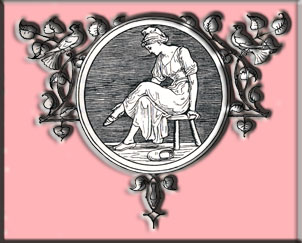

|
Once upon a time there was a nobleman who took as his
–Charles Perrault
|
|
Everyone is familiar with a version of Charles Perrault’s “Cinderella or the Glass
The story starts out with the girl’s mother already dead, and the father had
Then one day the King’s son decides to throw a ball. The stepsisters were very While Cinderella would be working at their hair, they would tease and ask:
“Cinderella, would you not be glad to go to the ball?”
|
|
Despite their constant teasing Cinderella does their hair perfectly. When they
This is when the fairy godmother appears, and tells her that she is there to grant
After scooping out the insides of the pumpkin the fairy godmother turns it into a
This done, she turns her attention on Cinderella and transforms her rags into a
Before Cinderella heads off for the ball, the fairy godmother warns her to be back
|
|
At the ball the prince pours attention upon her, and she meets her stepsisters,
Cinderella has such a grand time with the prince that she forgets about the time
When the stepsisters come home Cinderella pretends to have been sleeping and
|
|
The prince, who wants to marry the mysterious maiden, proclaims that he will
To the stepsisters astonishment it fits Cinderella’s foot as if it were made of wax.
The fairy godmother appears and touches Cinderella with her wand, making her
Cinderella then marries the prince, and arranges for her sisters to live in the
|
|
...continue on... and be enlightened to what hidden meanings lay within.
|
|
Perrault’s Cinderella, as cute and sweet as it may be, is lacking when compared to
Cinderella’s character is weak, and she is an easy target for abuse, such as when
The prince, who claims to love her, doesn’t even do any of the searching, but sends
Then there is the issue that those who did wrong in the story don’t get punished,
|
|
is it? Maybe it has something to do with its being made to present to the royal court. Then again, maybe not.
|

| Click to go indepth into Basile's "Cat Cinderella." |

| Click to go indepth into the Grimm's "Aschenputtel." |

| Click to go back to "Cinderwho?" |
